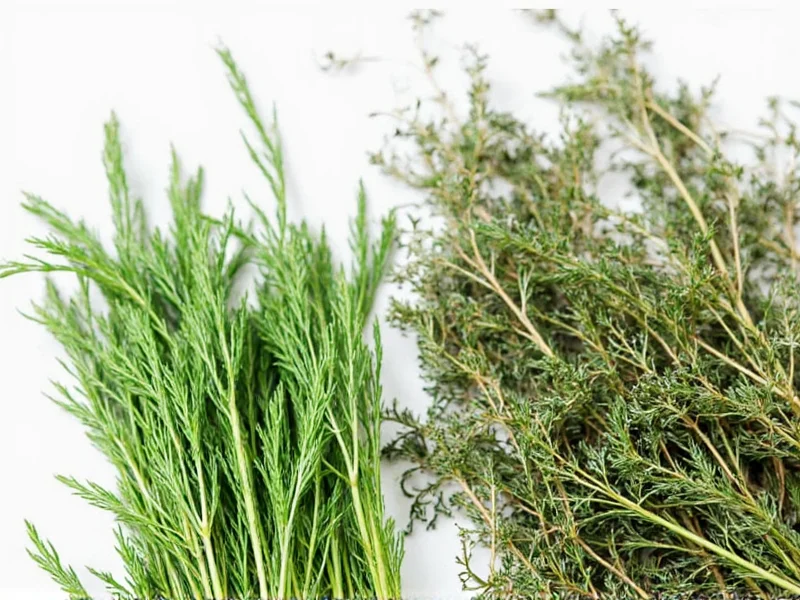Understanding the differences between fresh and dried dill is essential for achieving perfect seasoning in your culinary creations. This comprehensive guide breaks down exactly when and how to use each form for optimal results in your cooking.
Flavor Profile Comparison
Fresh dill delivers a vibrant, herbaceous flavor with delicate citrus undertones and a slight anise-like quality. The essential oils responsible for dill's distinctive taste remain intact in the fresh form, providing a complex aromatic experience. Dried dill, meanwhile, loses some of its volatile compounds during the dehydration process, resulting in a more earthy, muted flavor with less brightness.
When considering fresh dill vs dried dill conversion for your recipes, remember that drying concentrates certain compounds while diminishing others. This explains why you need less dried dill by volume to achieve comparable flavor intensity.
Substitution Guidelines
Knowing the proper fresh dill to dried dill ratio prevents seasoning disasters in your dishes. The standard conversion follows a 3:1 ratio:
| Fresh Dill | Dried Dill | Best Application |
|---|---|---|
| 3 tablespoons | 1 tablespoon | Soups, stews, braises |
| 2 tablespoons | 2 teaspoons | Sauces, dressings |
| 1 tablespoon | 1 teaspoon | Finishing dishes, salads |
When substituting dried dill for fresh in recipes, add it early in the cooking process to allow time for rehydration and flavor development. For fresh dill substitutions, stir in during the last few minutes of cooking to preserve its delicate flavor compounds.
Optimal Culinary Applications
Certain dishes benefit significantly from using one form over the other. Understanding these distinctions represents one of the most valuable fresh dill vs dried dill tips for home cooks.
Best Uses for Fresh Dill
- Pickling - Essential for authentic dill pickles where the fresh herb's volatile oils create superior flavor
- Seafood dishes - Complements fish and shellfish with its bright notes
- Cold salads - Adds freshness to potato salad, cucumber salad, and tzatziki
- Finishing touch - Sprinkled over soups, dips, or roasted vegetables just before serving
Best Uses for Dried Dill
- Long-cooking dishes - Soups, stews, and braises where extended cooking time allows flavor release
- Dry rubs - Blends well with other dried spices for meat and fish preparations
- Baked goods - Dill breads and savory pastries where moisture content matters
- Preserved foods - Works well in canned goods where fresh herbs would degrade
Storage and Shelf Life
Proper storage significantly impacts how long each form maintains its flavor profile. When exploring how to substitute dried dill for fresh, remember that degraded herbs won't provide accurate flavor comparisons.
Fresh Dill Storage
Treat fresh dill like cut flowers: trim the stems, place in a glass with an inch of water, cover loosely with a plastic bag, and refrigerate. Properly stored, fresh dill maintains quality for 7-10 days. For longer storage, freeze whole sprigs or chop and freeze in oil cubes.
Dried Dill Storage
Store dried dill in an airtight container away from light, heat, and moisture. Properly stored, dried dill maintains peak flavor for 6-12 months. After this period, it won't spoil but will gradually lose potency. Test older dried dill by rubbing a small amount between your fingers—if the aroma is weak, it's time to replace it.
Nutritional Considerations
Both forms offer similar nutritional profiles, though fresh dill contains slightly higher levels of vitamin C and certain volatile compounds. Dried dill concentrates other nutrients due to water removal, resulting in marginally higher mineral content by weight. For most culinary purposes, these differences don't significantly impact flavor decisions.
Economic Factors
When deciding between fresh and dried dill, consider both immediate cost and value per use. Fresh dill typically costs more per ounce but delivers superior flavor in appropriate applications. Dried dill offers better shelf stability and often provides more servings per purchase. Calculate cost per recipe rather than per ounce to determine true value.
Seasonal Availability
Fresh dill has peak availability during late spring through early fall in most climates. During off-seasons, dried dill provides a reliable alternative. Gardeners can extend fresh dill availability by planting successive crops every 3-4 weeks throughout the growing season.
Reviving Dried Dill Flavor
Maximize dried dill's potential with these techniques:
- Toast lightly in a dry pan before use to release essential oils
- Reconstitute in warm broth or oil before adding to recipes
- Combine with acid (lemon juice or vinegar) to brighten muted flavors
- Pair with complementary herbs like parsley or chives to enhance complexity











 浙公网安备
33010002000092号
浙公网安备
33010002000092号 浙B2-20120091-4
浙B2-20120091-4